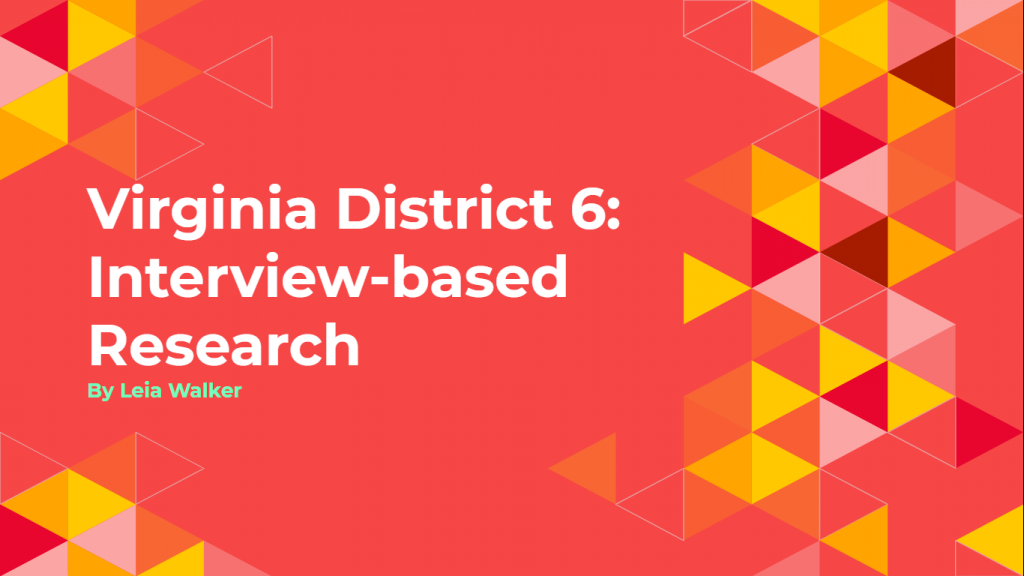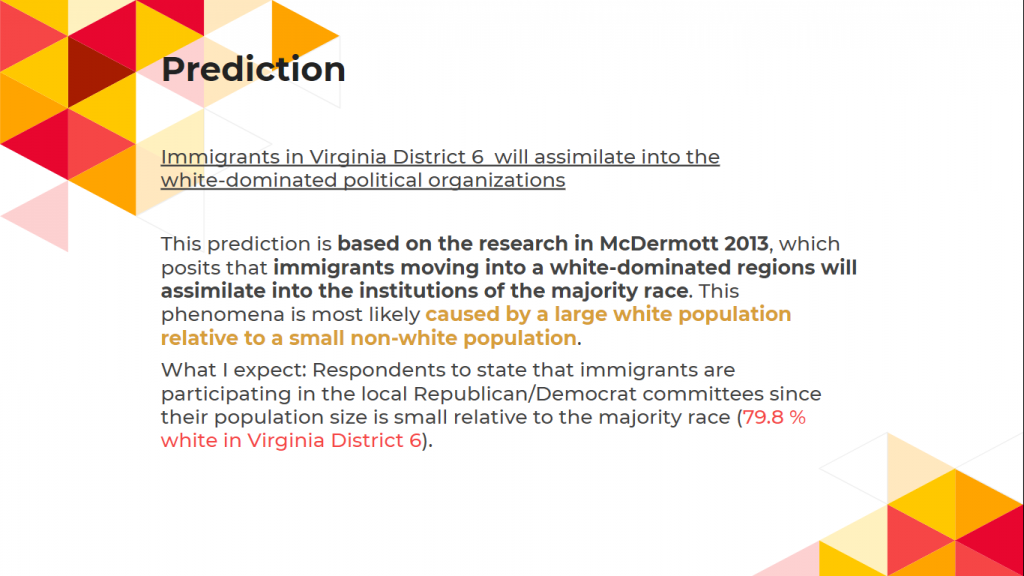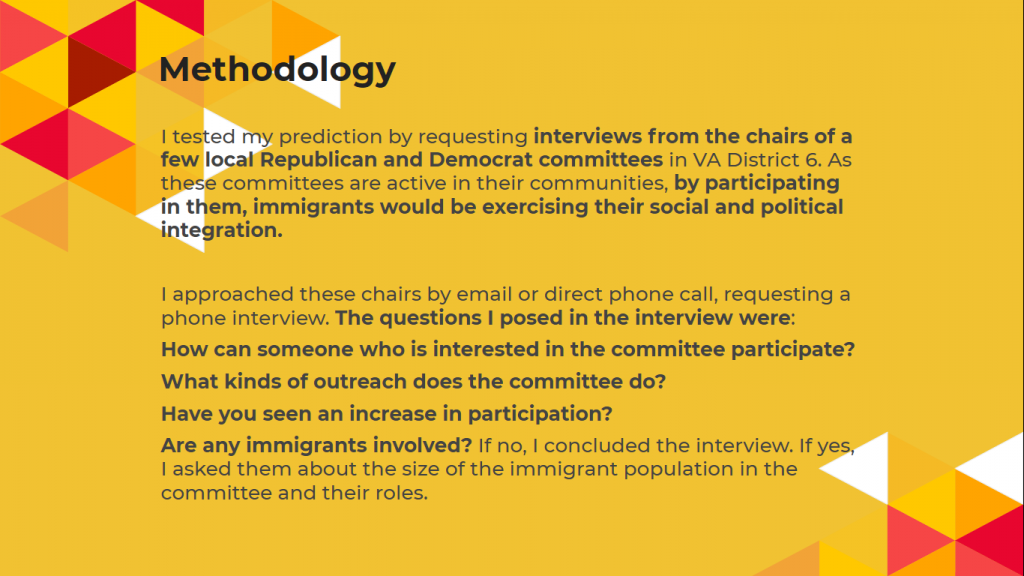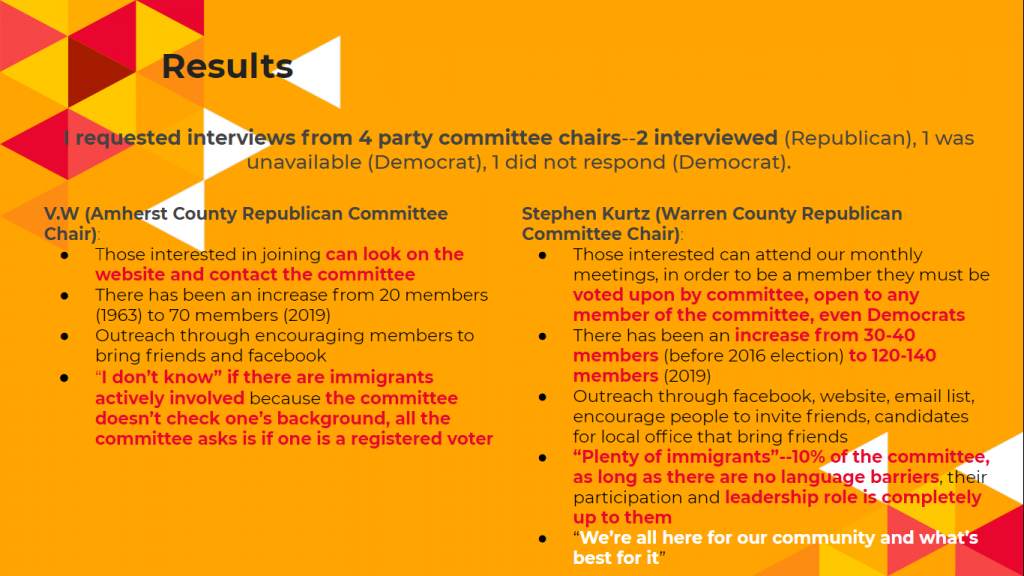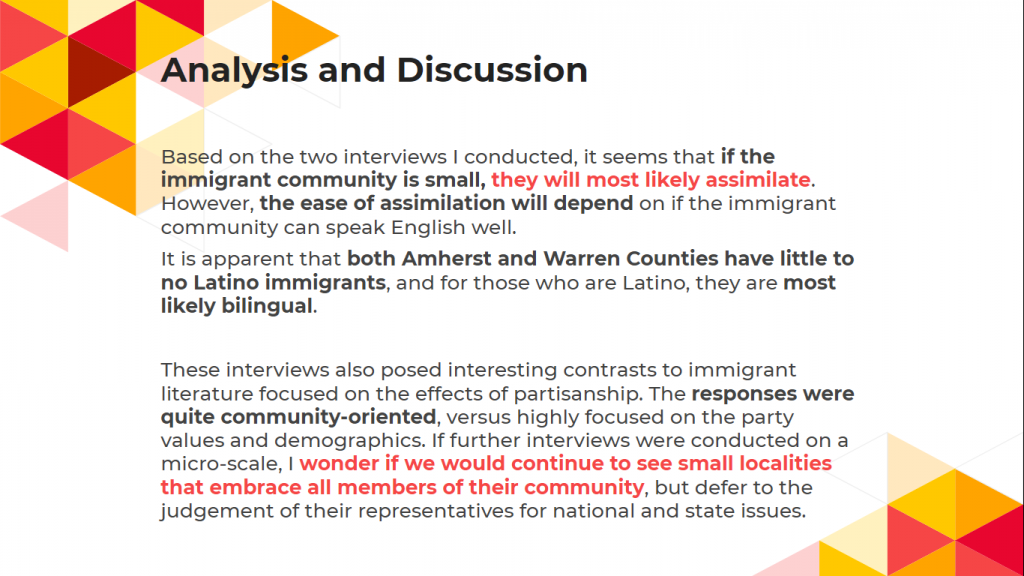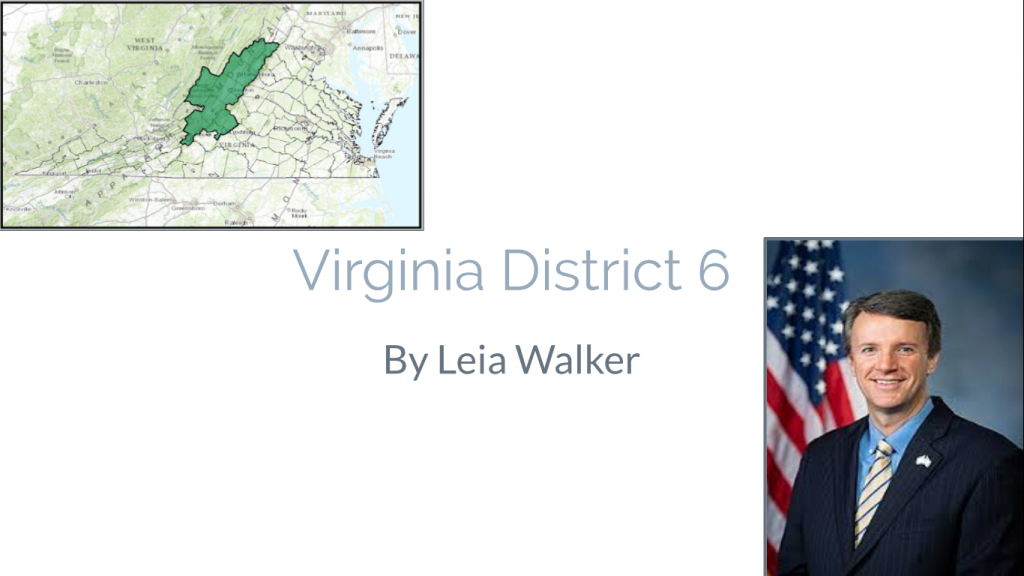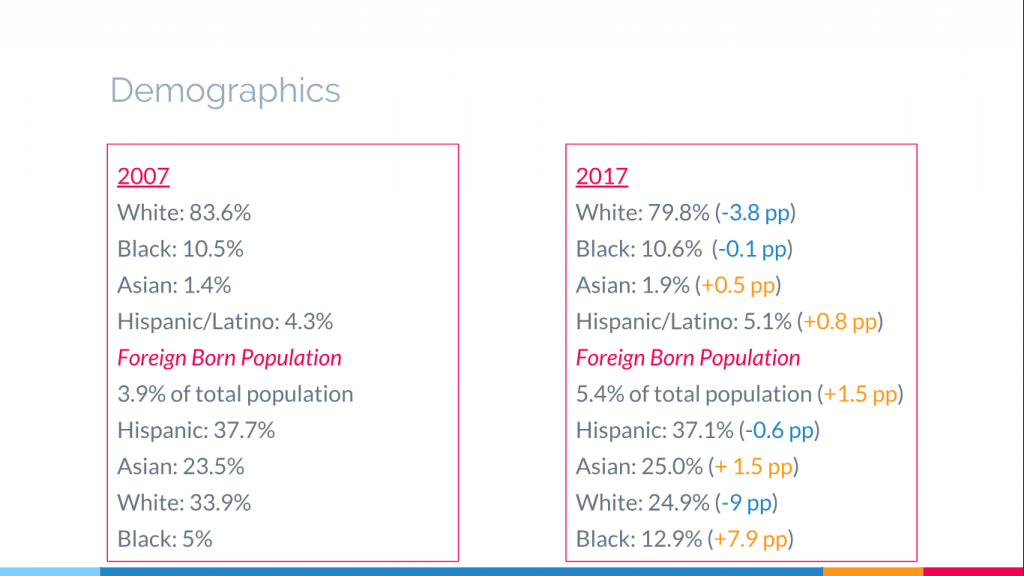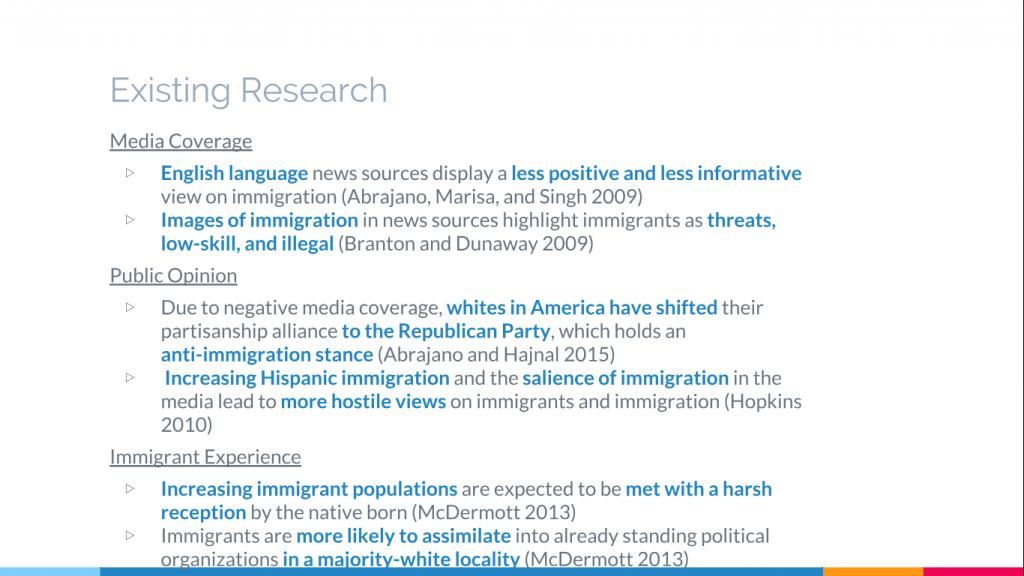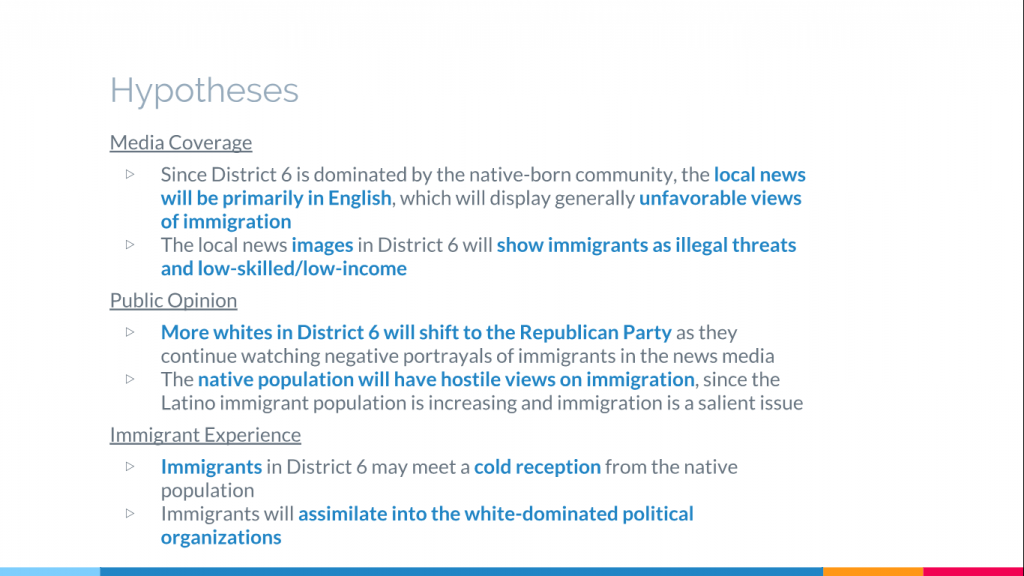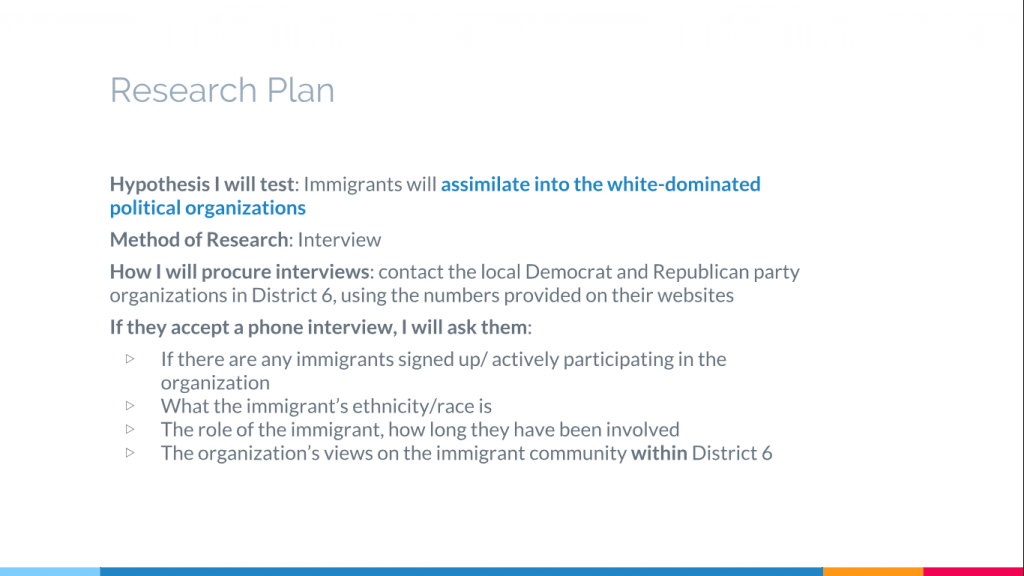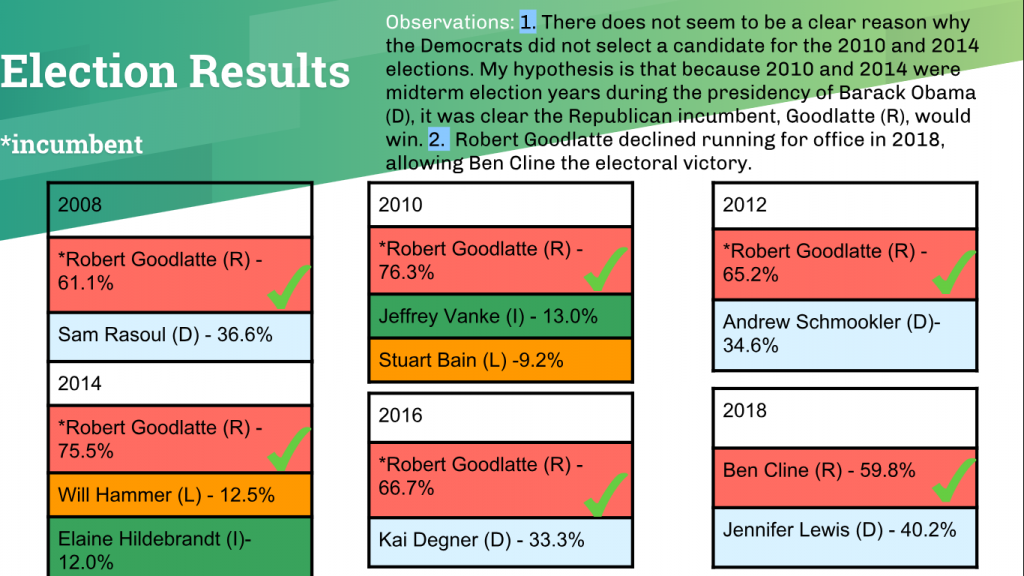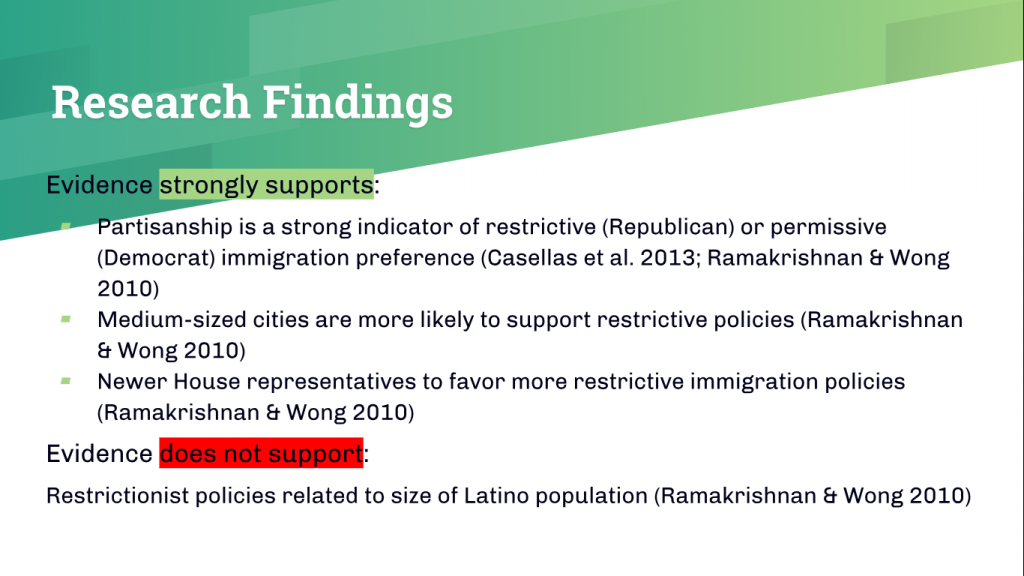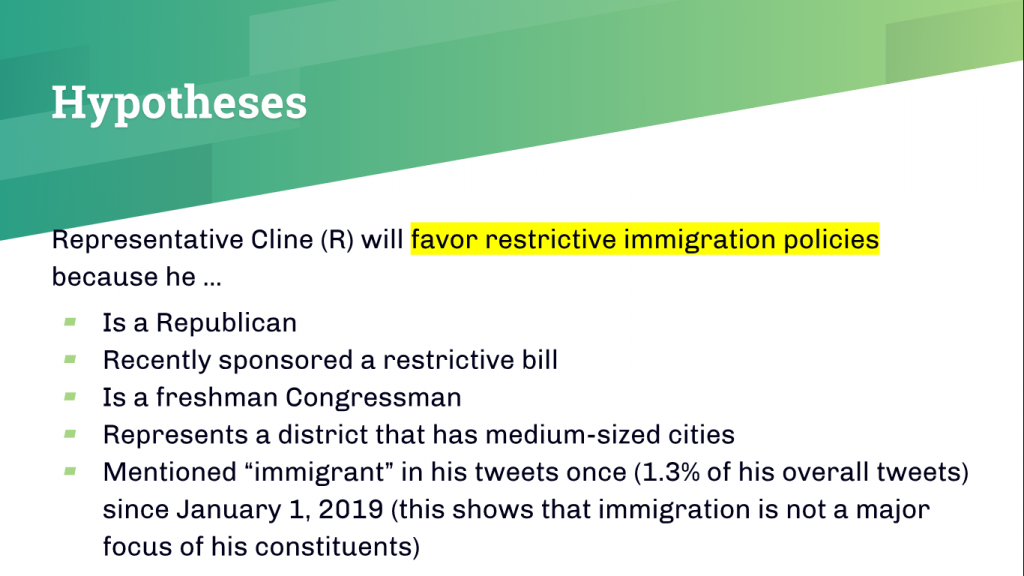By Leia Walker and Germalysa Ferrer
A wristwatch is a fascinating device whose outside is one complete unit, but the interior is full of small, important gadgets that cannot be overlooked. The wristwatch is the blessed American nation and the small gadgets are its localities. It is imperative that we understand how important localities are today, especially in an age where the nation is sharply polarized over what stance to take on immigration. Today’s news sources depict all Republicans following one mindset and Democrats another. However, what they fail to see is how localities, particularly small ones, prioritize their community members over party agenda. To support this claim, we will be observing and comparing Virginia’s District 6 (observed by Leia Walker) and Minnesota’s District 5 (observed by Germalysa Ferrer).
There have been quite convincing arguments that posit partisanship as a strong indicator of immigrant preference; Republicans prefer strict regulations and Democrats prefer permissive policies. In addition, research also concludes that newer House Representatives are more likely to favor restrictive immigration policies. This is a characteristic facing Virginia’s District 6 at the present. However, these arguments do not specify who or what really determines an immigrant’s experience once they arrive in America. According to immigration scholar Monica McDermott, local context heavily determines an immigrant’s experience in the US. Truly what immigrants need is a kind reception in order to feel at home.
What one would expect for Republican localities to do is reject immigrants and for Democratic localities to accept them. However, that is not the case for two anonymous Republican counties of Virginia’s District 6. When asked about immigrant participation in their Republican committee, one of the county chairs mentioned that immigrants indeed do participate, further stating that the committee is “open to any members of the community, we represent the people, we’re all here for our community and what’s best for it.” The other county chair mentioned that “all we ask is that you are a registered voter, it doesn’t matter your background,” in order to be involved in the Republican committee. He continued, saying there are “clerks, sheriffs, and private organizations” that influence the political and social initiatives of a community, highlighting that there are other players in the local context besides partisanship. These two counties, highly representative of Virginia’s District 6 due to their rural setting and small population size, surely have a community-oriented focus that quite clearly transcends partisan expectations. Not only does this observation clarify the role of localities in the fabric of America, but it signals the solution to communities that do not know how to receive immigrant populations: continue to favor community-oriented policies that seek to integrate any and all members of the community.
Again, we argue that immigrant integration is dependent on community-based initiatives that service entire communities because they, by virtue, include immigrants. What you would expect from a liberal Democratic district such as Minnesota’s 5th district is that immigrant integration would be encouraged. Before researching, I knew that nonprofits facilitated immigrant integration in a local district, but I had no idea the extent of their roles. I originally thought that immigrant nonprofits and cultural groups (or groups who are concentrated on serving one group of people) contributed equally to immigrant integration. However, after interviewing Democrat faculty, nonprofit executive directors, and cultural group representatives, I learned that nonprofit organizations helping any and all immigrants engage with their community are the critical foundation. During my interview with communication directors of District 5’s Democratic organization, I was often referred to Arrive Ministry, the largest nonprofit and immigrant-welcoming organization of the district. When I interviewed people from cultural groups, they too referred me to me back to Arrive Ministry. Even the services they provide such as daycares, elderly assistance, and translation services, provided by groups like the South-East Asian Association, were again associated with Arrive Ministry. Bob Oehrig, Arrive Ministry’s executive director, told me about all of the services that it provides such as legal help, jobs, furnished housing, and even classes that aim to teach refugees and immigrants skills like riding the bus. Initiatives and nonprofits like Arrive Ministry that service all immigrant/refugee populations, rather than just specific populations show why it’s important to support initiatives that service entire communities rather than one population because they play an important role in everyone’s integration.
Overall, Virginia’s District 6 and Minnesota’s District 5 show very community-oriented leaders and highlight the need for communities to continue their ‘embrace-all’ policies and organizations, which accept and protect immigrants residing in the locale. While skeptics of community-centered policies may argue that only majority interests will be observed, that may not be the case on a local scale, where minorities are taking part in the social and political activities of the majority group. Virginia’s District 6 has a more policy-oriented and public office approach to serving the community, and Minnesota’s District 5 approaches service through nonprofit organizations, but both districts bring immigrants into the larger societal circle of the district, furthermore producing the political and social integration of immigrants. These strategies, particular policy-oriented ones, are already beginning to take form in New Haven, CT, where the city government released municipal IDs that allow immigrants and native-born Americans to take part in the same locally-provided activities, recognized by local public offices and the police. Measures like these will ensure the cohesion between an incoming population and those already residing, which allows for greater progress in community initiatives, activities, and morale. For what happiness or peace is there in a community with no unity?
